
© Terra Project
Text and photographs by TerraProject collective1.
friendly fire: noun Military, “Weapon fire coming from one’s own side, esp. fire that causes accidental injury or death to one’s own forces.”
Oxford dictionary
This is a story which follows the words of Italian Army and volunteer personnel who served during the Balkan wars in 1995 and 1999 in what are today the territories of Bosnia and Kosovo. Their voices, or, for those who left us, the ones of their family members, present a dramatic leitmotiv: the insurgence of the so-called Balkan Syndrome. Since the end of the war, more than 200 members of the Italian Army have died and 2500 are sick, without an official instigator, but with a disturbing series of doubts and hidden truths. The uncertainty of the cause does not deny the vehemence of the cancers that represent the core of the Balkan Syndrome.
Among the candidates of this sickness, depleted uranium weapons seem the most probable. These weapons have become increasingly popular in the most recent conflicts due to their enormous explosive capability, able to destroy bunkers and armored tanks. Once they explode, they release clouds of mildly radioactive heavy metal dusts. Independent research studies have shown that heavy metal nanoparticles are very toxic for living organisms, and once in a body, they get accumulated in tissues and can cause the proliferation of cancer cells. Mary Olson, a nuclear waste specialist at the Nuclear Information and Resource Service, stated that “ingested DU particles can cause up to 1,000 times the damage of an X-ray”.

© Terra Project
But truth, again, is a fugitive. In 2005, Italian Defense minister Antonio Martino claimed that “our soldiers don’t have any risk with depleted uranium: they don’t use it, and neither do the soldiers of other countries”. Documents have instead revealed that depleted uranium weapons had been used in may conflicts, from the Gulf War in 1991, to Bosnia in 1995, the Balkans in 1999, to today’s Iraq and Afghanistan. It is thought that between 17 to 20 countries possess depleted uranium weapons in their arsenals. These include the U.S., the UK, France, Russia, China, Turkey, Israel, Saudi Arabia, Bahrain, Egypt, Kuwait, Pakistan, Thailand, Iraq, and Taiwan.
However our project had another aim than a journalistic investigation. After meeting, and photographing, in 2006, sick soldiers or families of dead ones, we wanted to move our visual research in those lands where these people were most probably exposed to the deadly contamination.
The opportunity arrived at the end of 2009, when we were contacted by curator Claudi Carreras and invited to take part in a group exhibition of 20 collectives from south America and Europe on the topic of environment. For us this represented the pretext for continuing our project, and we began organizing it.
Telling a story from the past and looking for an invisible subject such as pollution was the main challenge of this project. We decided to be driven, in our research, by the recounting of the days of the war of an Army veteran, one Red Cross member, one volunteer, and the father of a dead soldier. Their words, at times full of pathos and strong images, at times lost in the desolation of a distant past, were coupled with the actual map of the bombing done by NATO, and documents we collected that could provide information on the attack sites in Bosnia and Kosovo.

© Terra Project
We split the areas of investigation among the four of us, and opted to visit the countries during the coldest months, imagining the symbolic power of snow covering the landscape. For us, the candid layer of ice could represent both the manifestation of the invisible, yet powerful, force that has taken away so many lives and has polluted the environment, and the cold and silent welcome of institutions towards these sick people, most of whom have never received any recognition for their illness or financial support from the Government or Army.
Bosnia and Kosovo offered to our eyes a particularly cold and snowy weather, fostering the message we wanted to pass through our images. We visited cities and the mountain villages, met with locals and interviewed some. But mostly we traveled on roads and among scenarios which witnessed war. Our visual research was done through the utilization of abstract elements instead of actual, exact, objective, description of the situation. We looked for moments, shapes, landscapes, which could induce the viewer to think about the vulnerability of the environment and humans, and the scars that war leaves on them, invisible, for years. This aesthetic approach represented somehow a variation from our usual methodology, done often through portraits and with a more direct documental structure. However, this solution proved an interesting challenge for our collective and the final result showed a great coherence. At the same time, we decided not to forget the informative, documentary component of our research, which always represents a crucial endeavor of our work. We thought that the words and memories of the four subjects could have helped the viewer to understand the historical as well as personal backgrounds of the account, as well a represent a testimony which he had the duty to preserve and spread. For this reason we recorded the interviews and edited a video.
When defining the project, and the utilization of both photographs and video, we kept in mind the layout of the exhibition. The idea was to present each portrait in the center, surrounded by four landscapes all from the areas visited by the subject during the years of the wars, forming a unity which could represent the memories of each person in those lands. The video had an important role and we foresaw the utilization of a large screen or projector, which had to be mounted along with the prints. The curator of the exhibition understood the importance of these different media and gave us all the necessary instruments to exhibit our material.
Our work is in progress: in the future we are planning to visit Bosnia and Kosovo, this time meeting and photographing the civilians that lived those moments and some of whom bear the permanent memory of the bombings. We believe that our story can help people understand the consequences that conflicts can have on humans and nature even in the distant future. We also believe that we should not forget how the same weapons, the same armaments are being used today, and the same actions will bear those repercussions that we can witness, after more than a decade, in the Balkans.
For more on our work please visit the gallery on our website TerraProject or the material posted for the traveling exhibition.
- Michele Borzoni, Simone Donati, Pietro Paolini, Rocco Rorandelli. [↩]










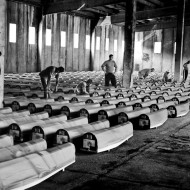
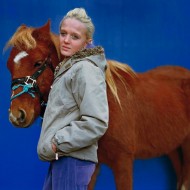

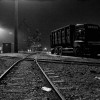
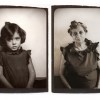











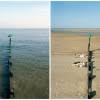

















You can also subscribe to this post comments RSS feed.